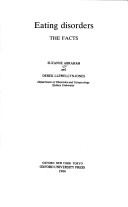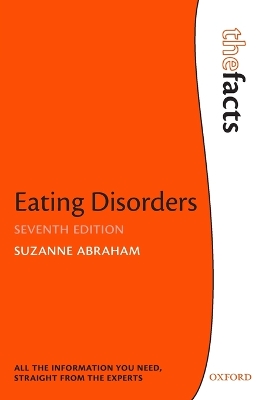Facts
2 total works
Eating disorders attract a considerable amount of media attention, and are currently being diagnosed more frequently. In general they affect more women than men, but the reasons why some women develop these disorders are not always very well understood. In this book the relationship between eating disorders and sexuality is discussed, and there is updated information on diagnosis and treatment. The specific conditions anorexia nervosa, bulimia nervosa and obesity are then dealt with in turn. The book has been rewritten for this edition and includes sections on infertility and pregnancy in women with anorexia nervosa and bulimia nervosa. The management of the eating disorders has been brought up to date and some new case histories have been added to illustrate the changes. Eating disorders are now managed by less authoritarian treatment programmes, administered by teams of health professionals (rather than by individual doctors). The authors emphasize the importance of learning sensible eating and exercise patterns and the role of self-help goups for those recovering from eating disorders.
Eating Disorders: The Facts is a comprehensive and accessible guide to the major eating disorders namely anorexia nervosa, anorexia nervosa not for weight or shape, exercise disorder, bulimia nervosa, purging disorder, rumination disorder, binge eating disorder and atypical.
Sympathetically and clearly written, this guide considers why eating disorders occur, and then looks at each in turn, describing the eating behaviours, diagnosis, and treatments available.The opening chapters tackle adolescent eating behaviours and infertility, pregnancy and the postpartum period. Case histories and patient perspectives provide insights into the mind of the eating disorder sufferer, making it easier for patients and their families to relate to the topics discussed.
Revised and updated new topics include contribution of epigenetics (in utero contribution), attachment in perinatal and early years, and the negative and positive impact of the internet and social media. Eating Disorders: The Facts provides an authoritative resource on eating disorders that will prove valuable for sufferers and their families.
Sympathetically and clearly written, this guide considers why eating disorders occur, and then looks at each in turn, describing the eating behaviours, diagnosis, and treatments available.The opening chapters tackle adolescent eating behaviours and infertility, pregnancy and the postpartum period. Case histories and patient perspectives provide insights into the mind of the eating disorder sufferer, making it easier for patients and their families to relate to the topics discussed.
Revised and updated new topics include contribution of epigenetics (in utero contribution), attachment in perinatal and early years, and the negative and positive impact of the internet and social media. Eating Disorders: The Facts provides an authoritative resource on eating disorders that will prove valuable for sufferers and their families.

